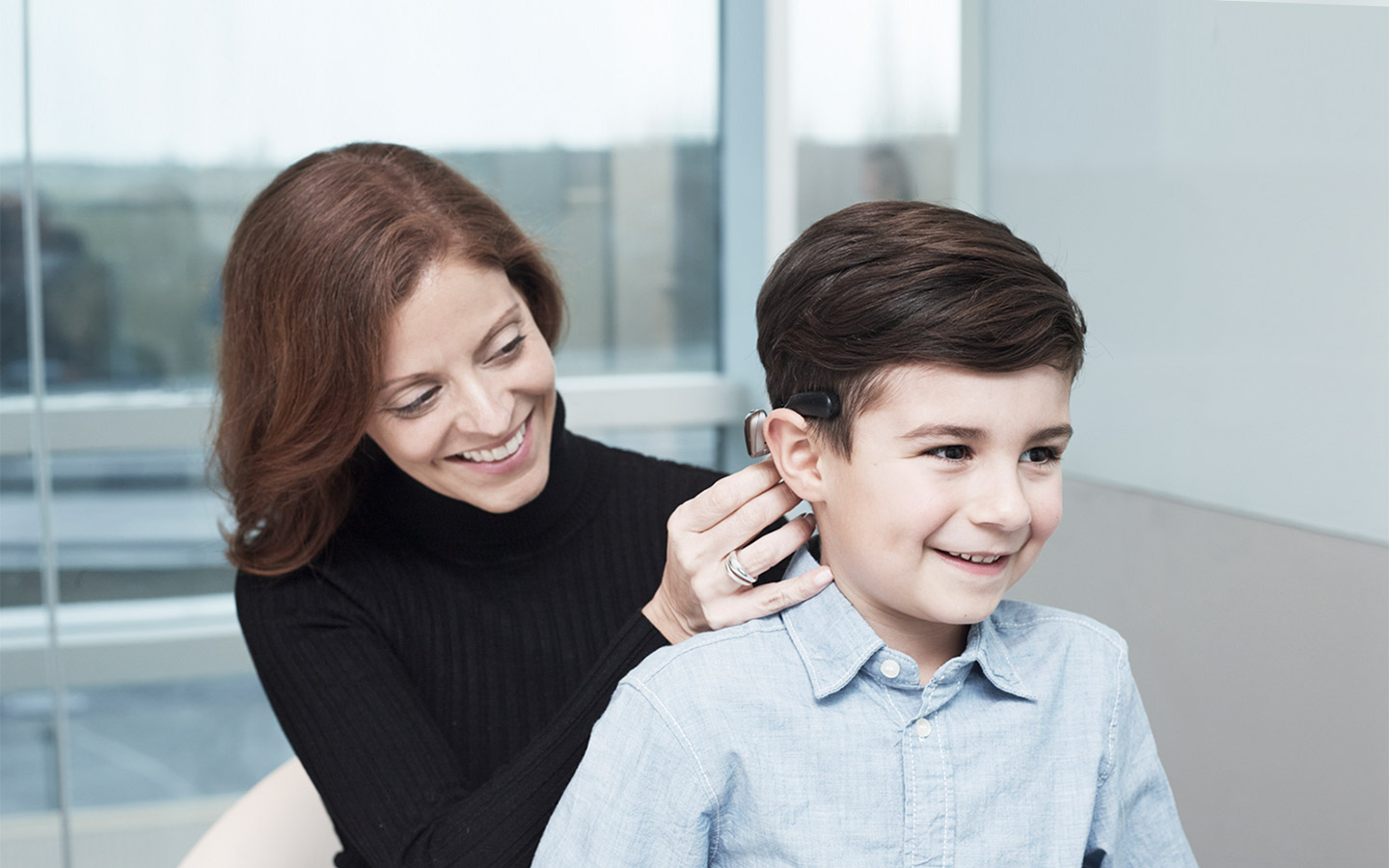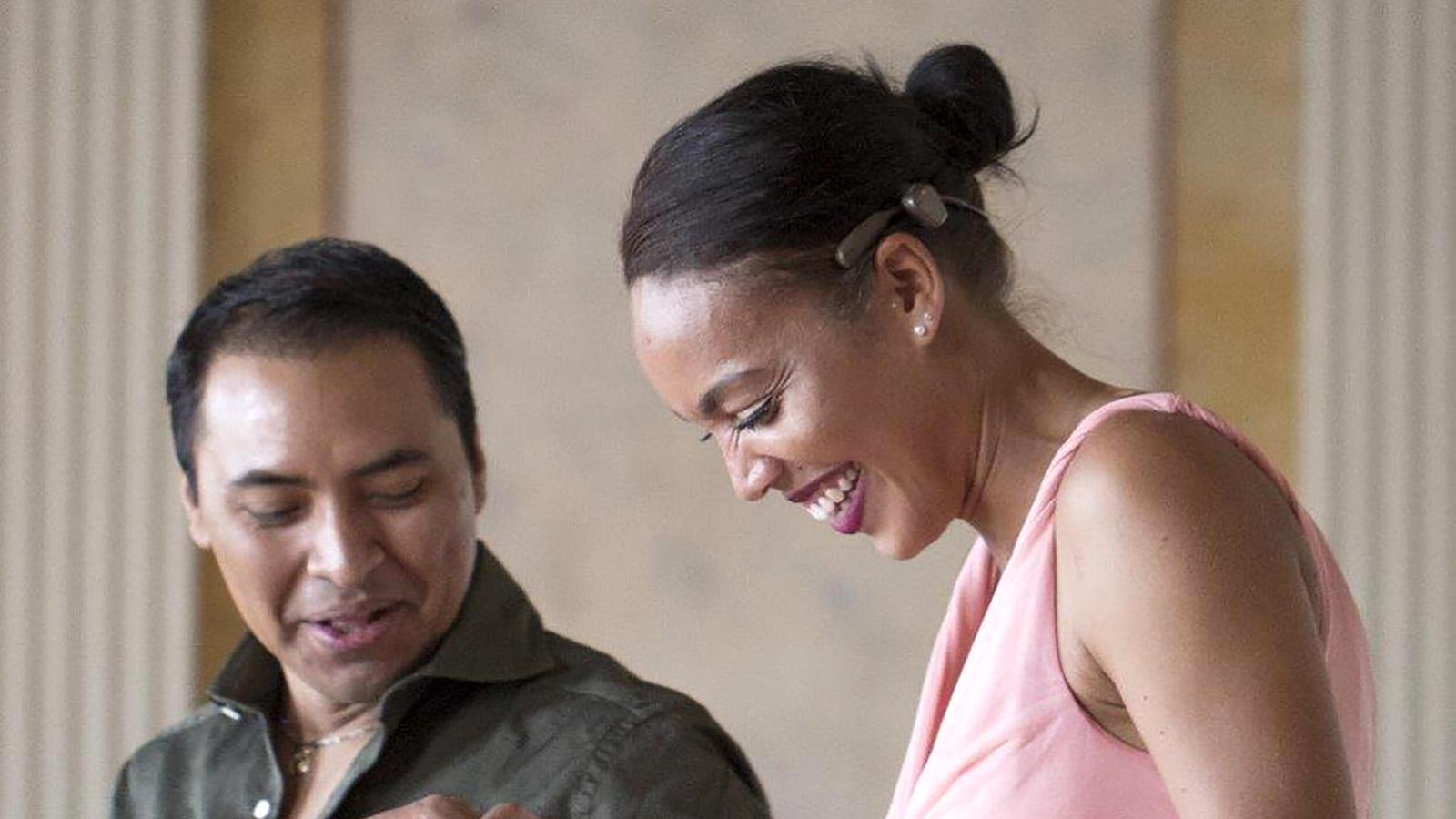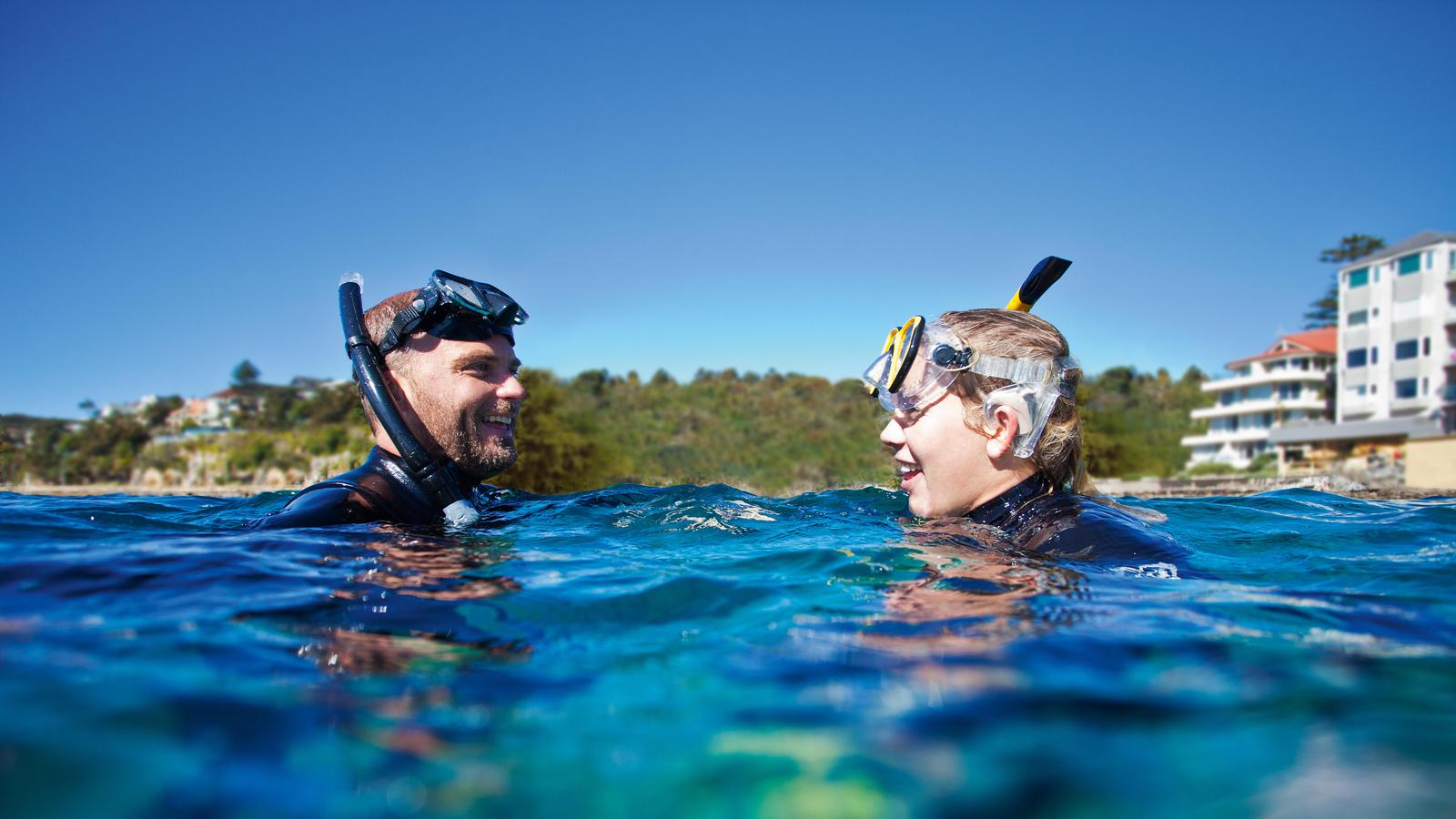Fitting your child's bone conduction device
Learn what to expect on your child’s fitting day and how to support them as they get used to their new hearing.

What you'll find on this page
- What to expect on your child’s fitting day
- What to expect when your child's sound processor is turned on
- How long it will take for your child to get used to their sound processor
- Questions to ask your hearing health professional
Your child’s fitting day is an important time in their hearing journey. As the day approaches, it is normal to feel excited and nervous. On fitting day, your child’s hearing health professional will fit their sound processor and program it to meet your child’s individual needs.
What happens on fitting day?
Your child’s hearing health professional will program their sound processor once they have recovered from bone conduction surgery or when they receive their non-surgical Baha® Start solution. The fitting process is typically simple and quick.
First, the hearing health professional will connect your child’s sound processor to the programming software and place the sound processor on your child’s head. Then they will change the system settings to suit your child’s needs, and your child will be able to hear sound through the sound processor for the first time.
Finally, your child's hearing health professional will program the sound processor to meet your child's individual needs. They can set specific listening programs for different hearing situations, such as quiet or noisy environments.
Your child’s new hearing device is now ready to go.
What should I expect when my child’s sound processor is turned on?
When your child’s sound processor is turned on, all the new sounds they can hear can be a little overwhelming to them at first – it will take some time to adjust and get used to the new sounds.
Initially, their hearing may feel different. Generally, within a few weeks of taking in all sorts of different sounds, the brain will adapt, and their hearing will start to feel more natural.1
Follow the guidelines for care and maintenance of your child’s device.
We offer many how-to videos, and our customer service team can help answer any questions you might have.
How long will it take for my child to get used to their sound processor?
It takes time and effort to get used to hearing with a bone conduction device. It doesn’t necessarily happen instantly. Help your child use the device to get used to it and ensure that they listen to a variety of sounds such as music, conversations and even the different types of noises around you. Patience and persistence are key.
Your child can start using the sound processor at home doing everyday things. In their own time, they can move on to more challenging environments like outdoors or public places.
“Once Cash started wearing his Baha, we noticed that he was speaking more, and he was articulating more.”
- Caitlin, Cash's mother, Cochlear™ Baha Start recipient
Questions to your child’s hearing health professional before fitting day
Here is a list of questions you can ask the hearing health professional to help you know what to expect at the first programming appointment and get for life with their new hearing device.
- What happens during the appointment?
- How much time will the first fitting session take?
- What does programming the sound processor feel like?
- Will my child hear right away?
- How will it sound?
- How long will it take my child to adjust to the new sound?
- How do I put on my child’s device, and can they put it on themselves?
- Will my child need to wear their sound processor all the time?
- How does the sound processor work?
- What tips do you have for using the new device?
- How often will I need to charge or change the batteries?
- What is the cost of batteries?
- How do I store and care for the device?
- What resources do you recommend for rehabilitation?
- What happens if my child’s hearing changes over time?
- Is there a network of families of bone conduction solution recipients that I can connect with?
- How often should we see our hearing health professional for follow-ups?

Disclaimer
Please seek advice from your health professional about treatments for hearing loss. Outcomes may vary, and your health professional will advise you about the factors which could affect your outcome. Always follow the directions for use. Not all products are available in all countries. Please contact your local Cochlear representative for product information.
For a full list of Cochlear’s trademarks, please visit our Terms of Use page.
References
- Hoffmann J. Subjective evaluation of clear rich and natural sound. Cochlear Bone Anchored Solutions AB, Sweden. 2020; D1788013.








